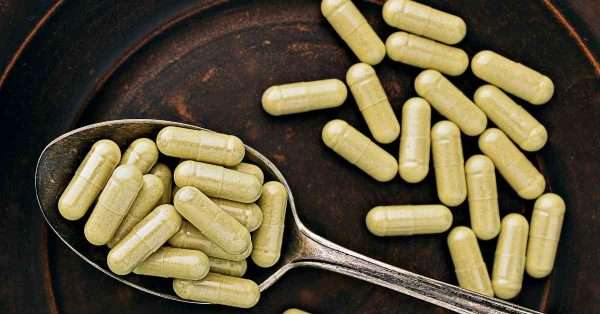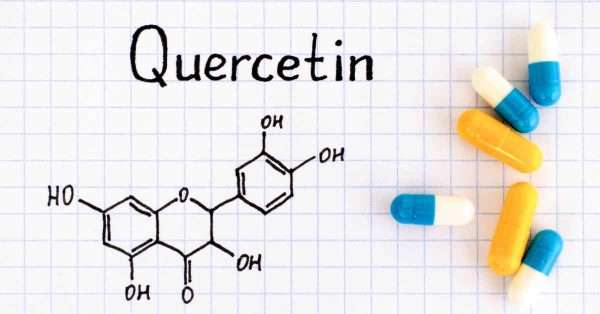Quercetin, a flavonoid that naturally occurs in an array of fruits, vegetables, and grains, has been steadily capturing the medical community’s attention due to its potential role in pain relief. This article delves into the depth of the scientific evidence that supports using Quercetin for pain management, drawing upon high-quality resources such as reputable medical journals and authoritative institutions like the National Institutes of Health (NIH).
Delving into Quercetin and Its Multifaceted Health Benefits

Quercetin, a prominent member of the flavonoid family, is crucial in providing health benefits through cell signaling pathways and antioxidant effects. It is present in various dietary sources, including but not limited to onions, apples, berries, red wine, and green tea. A significant concentration of Quercetin also exists in the Psidium guajava (guava) leaves, which traditional medicine has used for various medicinal purposes, including pain relief. The health benefits of Quercetin primarily stem from its:
- Anti-oxidative properties: Quercetin neutralizes harmful free radicals in the body, thereby mitigating oxidative stress. This process potentially prevents damage to cells and tissues, contributing to overall health.
- Anti-inflammatory properties: Quercetin can alleviate inflammation, a common cause of pain and discomfort in various conditions, from arthritis to post-operative recovery.
- Anti-mutagenic properties: Quercetin can potentially inhibit changes in the genetic material of cells, preventing mutations that could lead to cancer.
- Anti-carcinogenic properties: Quercetin may assist in preventing the development of cancer by inhibiting the growth of cancer cells.
These compounds can modulate essential cellular enzyme functions, contributing to their potential therapeutic effects.
The Science Behind Quercetin for Pain Relief: A Detailed Review of Research Findings

A multitude of scientific studies have supported the use of Quercetin for pain relief in various contexts:
- Arthritis: A study published in the Journal of Nutrition discovered that Quercetin could reduce inflammatory pain in arthritis. This finding suggests that Quercetin could be a natural alternative to traditional pain relievers.
- Neuropathic Pain: Research published in the journal Neuropharmacology demonstrated that Quercetin could alleviate neuropathic pain, a type of chronic pain resulting from nerve damage or dysfunction.
- Post-Operative Pain: A study in the International Journal of Molecular Sciences indicated that Quercetin could assist in managing post-operative pain, thereby reducing the need for opioid pain relievers.
- Back Pain: Quercetin’s anti-inflammatory and antioxidant properties may help with back pain, especially if the pain is due to inflammation. Chronic back pain can often result from conditions like arthritis, herniated discs, or muscle strain, all of which involve some inflammation. By reducing inflammation, Quercetin could potentially help alleviate this type of pain.
In addition to these specific contexts, Quercetin’s anti-inflammatory properties may also play a role in managing hypertrophic scarring and keloids, which can cause pain and discomfort. The anti-inflammatory properties of Quercetin could potentially contribute to preventing or reducing excessive scar formation.
Incorporating Quercetin into Your Pain Relief Strategy
You can obtain Quercetin through your diet or supplements. Foods rich in Quercetin include onions, apples, berries, red wine, and green tea. Supplements are available for those who find it challenging to get enough Quercetin through their diet alone. However, it’s crucial to speak with a healthcare provider before starting any new supplement regimen, as the appropriate dose of Quercetin can depend on various factors, such as the user’s age, health, and other conditions.
Quercetin’s Bioavailability and Impact on Pain Relief
Bioavailability refers to the how well a substance is absorbed and becomes available at the site of physiological activity. For Quercetin, bioavailability can significantly impact its effectiveness in pain relief.
Quercetin’s bioavailability is relatively low due to its poor solubility in water. However, research has shown that combining Quercetin with other substances, such as Vitamin C or digestive enzymes, can enhance its bioavailability. This increased bioavailability can, in turn, enhance Quercetin’s anti-inflammatory and antioxidant effects, potentially making it more effective for pain relief. For the best results, it’s a good idea to take Quercetin supplements with other food.
Here are some of the highest-rated Quercetin products to try:
- Thorne Quercetin Phytosome: This product is considered the best overall Quercetin supplement. Thorne is a reputable brand known for its high-quality supplements.
- Jarrow Formulas Quercetin: This is a great budget-friendly option. Jarrow Formulas is a trusted brand that offers a wide range of dietary supplements.
- Double Wood Quercetin With Bromelain: This product combines Quercetin with Bromelain, an enzyme in pineapples that may enhance the absorption of Quercetin.
- Mary Ruth’s Quercetin: This is a high-quality liquid Quercetin supplement. Mary Ruth’s is known for its organic, non-GMO, and allergen-friendly products.
- Solaray Mega Quercetin: With 1,200mg of Quercetin in each two-capsule serving, Solaray Mega Quercetin has one of the highest dosages in the industry. It also includes bioflavonoid concentrate, hesperidin concentrate, rutin concentrate, and bromelain.
Conclusion: Harnessing the Potential of Quercetin in Pain Management
In conclusion, Quercetin, a naturally occurring flavonoid, presents a promising avenue for pain management. Its potent anti-inflammatory and antioxidant properties and its presence in various dietary sources make it a clear focus of research in the quest for natural pain relief strategies.
While studies have demonstrated Quercetin’s potential in managing conditions like arthritis, neuropathic pain, and post-operative discomfort, it’s crucial to remember that pain management is a complex field that requires a comprehensive, individualized approach. Quercetin can be valuable to a broader pain management strategy, but it’s not a standalone solution.
More Stories
Find more amazing stories on the blog.
References:
- Panche, A. N., Diwan, A. D., & Chandra, S. (2016). Flavonoids: an overview. Journal of Nutritional Science, 5, e47. DOI
- Naseer, S., Hussain, S., Naeem, N., Pervaiz, M., & Rahman, M. (2018). The phytochemistry and medicinal value of Psidium guajava (guava). Clinical Phytoscience, 4(1), 32. DOI
- Arafa, M. G., Ghalwash, D., El-Kersh, D. M., & Elmazar, M. M. (2018). Propolis-based niosomes as oromuco-adhesive films: A randomized clinical trial of a therapeutic drug delivery platform for the treatment of oral recurrent aphthous ulcers. Drug Delivery, 25(1), 1650–1658. DOI
- Suntar, I., Khan, H., Patel, S., Celano, R., & Rastrelli, L. (2018). An overview on Citrus aurantium L.: Its functions as food ingredient and therapeutic agent. Oxidative Medicine and Cellular Longevity, 2018, 7864269. DOI
- Li, Y., Yao, J., Han, C., Yang, J., Chaudhry, M. T., Wang, S., Liu, H., & Yin, Y. (2016). Quercetin, inflammation and immunity. Nutrients, 8(3), 167. DOI




